By Jamie Slingerland
COVID-19 and how it shook up the wine industry in 2020 will go down in history for wineries and growers as an earth-shattering year with many uncertainties.
Note: Jamie Slingerland, below, is a veteran wine grower and is director of viniculture at Pillitteri Estates Winery in Niagara-on-the-Lake and also a former Ontario Grape King (2018).

Labour was often delayed or scarce at the start. Employees were afraid to come to work including vineyard, processing and bottling line employees even when social distancing/sanitation/masks/safety was possible. For most VQA wineries, Ontario’s main market, agri-tourism, came to a screeching halt. The supply chain was disrupted and at first it looked as though no one could get bottles, labels, VQA approvals, parts, wine processed or bottled, tanks emptied for the next vintage or where we could sell wine. Demand for icewine and reserve wines nearly collapsed. The Industry was in turmoil as was everyone else’s life.
By the way, VQA Ontario was stellar in stepping up to the plate. They worked hard helping wineries stay in business by continuing to approve wines. Thank goodness agriculture and wine were deemed an essential service. Our sympathies for those businesses that had to stay closed and their employees could not work.
The LCBO had a banner year in sales but did not open up market share for VQA wine beyond the 7-8% that is sold there already, even though for the first few months many shelves lay bare of imported products.
It is true that the LCBO had its biggest sales year ever and those wineries with market share and listings had their best year ever at the LCBO. Also, more VQA wines were sold than ever before but proportionally the market share at the LCBO for VQA wines didn’t change.
Ontario Wineries adapted quickly,
business models changed
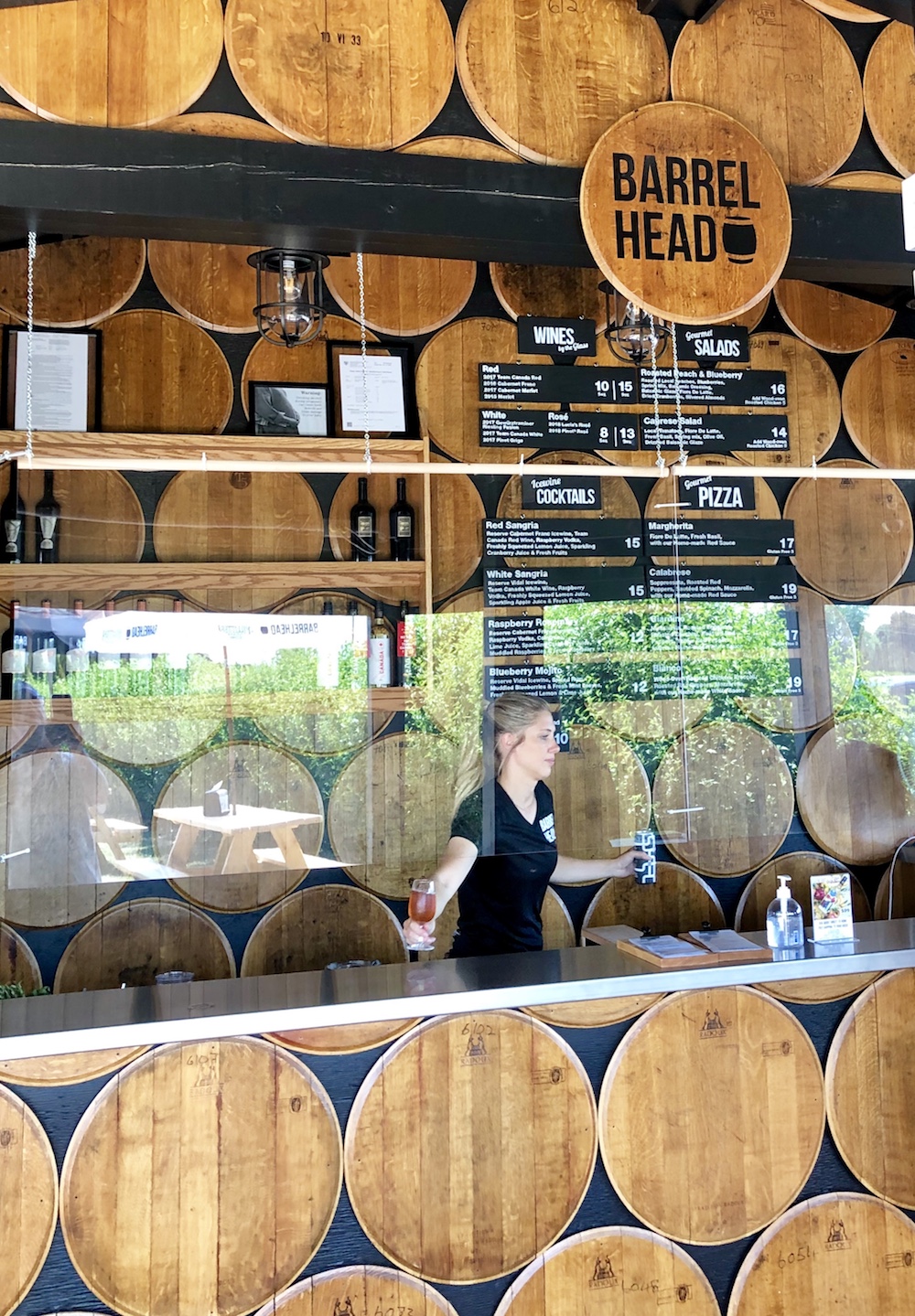
What happened at many Ontario wineries when everything was gloom and doom was that many picked themselves up and boosted their direct to consumer deliveries and curbside sales. Successfully and aggressively marketing with social media and our existing contact lists to sell wine direct to the consumer proved to be whether a winery without LCBO listings survived or failed.
Consumers probably achieved some of the best value for quality wines that they had ever seen before because wineries offered some pretty good discounts with case sales of wines delivered straight to the consumer. Not a lot of mid-range wines or higher-end wines were sold but consumers went wild for good value wines and everyday drinking wines. People definitely drank more in 2020 and were looking for deals. Our server crashed when the Toronto Star gave our Canadian Gothic white wine its second highest score of 92 points for $99 a case among 30 higher priced wines.
Why wouldn’t it go over big! As we offered one of the lowest priced wines with the highest score. We haven’t looked back since. Direct to consumer delivery went from a few cases per week to hundreds per day. The logistical challenge was difficult but we adapted. Margins are down for many wineries but they succeeded in surviving in spite of COVID. Wineries in the short term had to change their business model. When international agri-tourism returns we will see a return to the demand for Canada’s signature wine, icewine. But direct to the consumer on-line is here to stay in a big way.
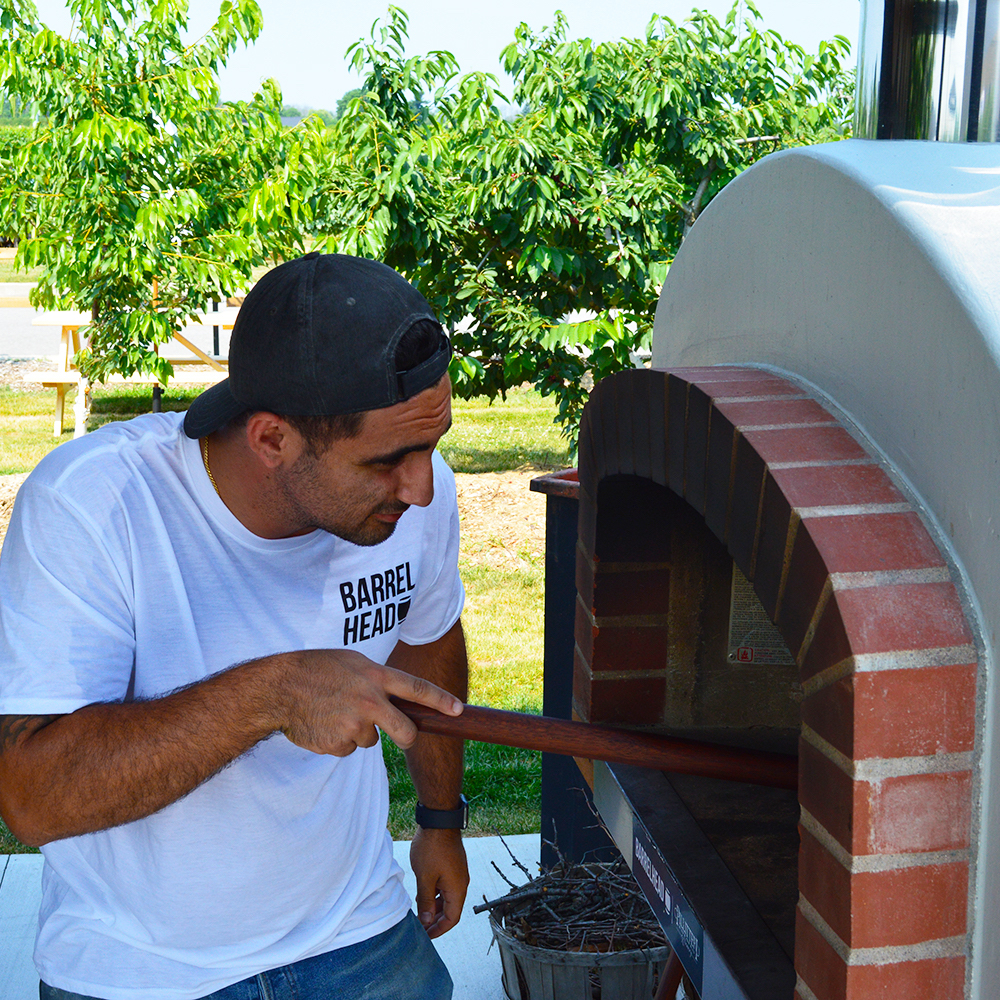
Export is a major part of our business and Pillitteri Estates Winery is a major exporter of wines from Canada to 43 countries. As difficult as the environment was, our export team of my brother-in-law, son and son-in-law, our exports in 2020 exhausted themselves to show a slight growth in business with existing customers. What was missing were the new customers from trade shows that we add each year.
To increase cash flow, our winery diversified into a new venture by developing what became a very successful business on site, an outdoor wood fired pizza patio in a cherry orchard with wine service beside the winery. We exceeded by attracting a thousand+ new customers each 3-day weekend over 4 months. Once agri-tourism returns to normal we are very confident we will be very successful with our growth into online and our wood fired pizza patio.
As for the 2020 crop …
Location of most of
Ontario’s grape production
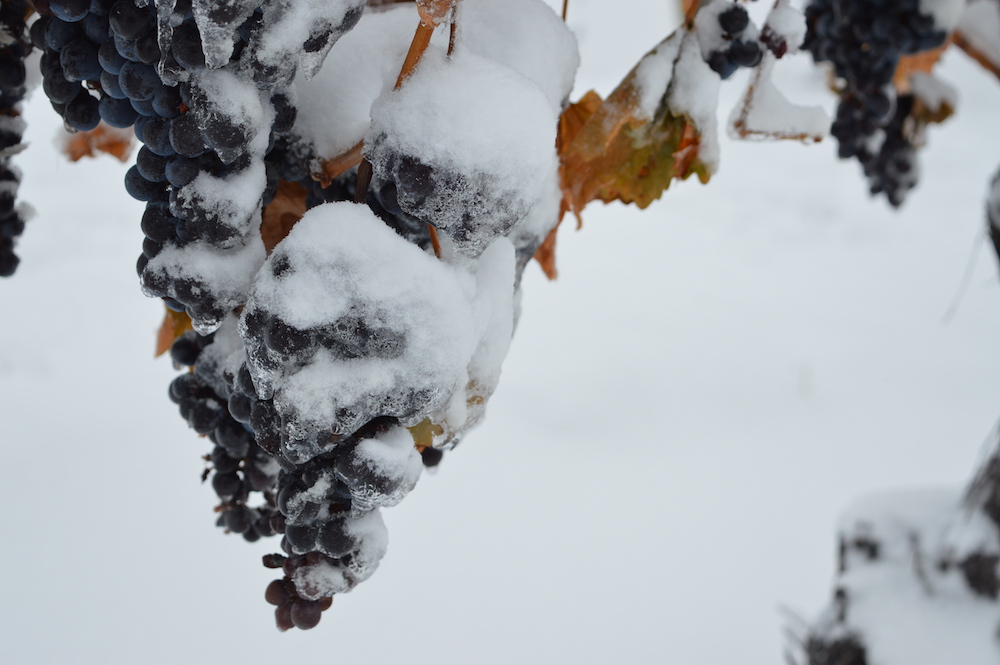
The grape crop in NOTL determines the grape crop in Ontario as 65-70% (source GGO) of the entire grape crop in Ontario is found in NOTL. 70% of the grapes produced in NOTL have irrigation (NOTL irrigation committee) and about 85% (Lakeview Vineyard EQ) have wind machines (1,000+ machines).
Therefore drought and cold damage is mitigated in NOTL compared to other parts of the province. Over 95% of Ontario’s cold sensitive Merlot and Cabernet Sauvignon grapes are produced in NOTL. Bordeaux grapes excel with moderate winters and hotter summers and greater GDD (Growing Degree Days). NOTL would be considered more climatically comparable to Bordeaux varieties than other parts of Ontario that are mostly focused on Burgundy varieties. Grapes are one of the most stable crops in Ontario when it comes to crop losses covered by crop Insurance (Agricorp Crop Insurance).
Breakdown of primary varieties
(GGO January 31, 2020 annual report)
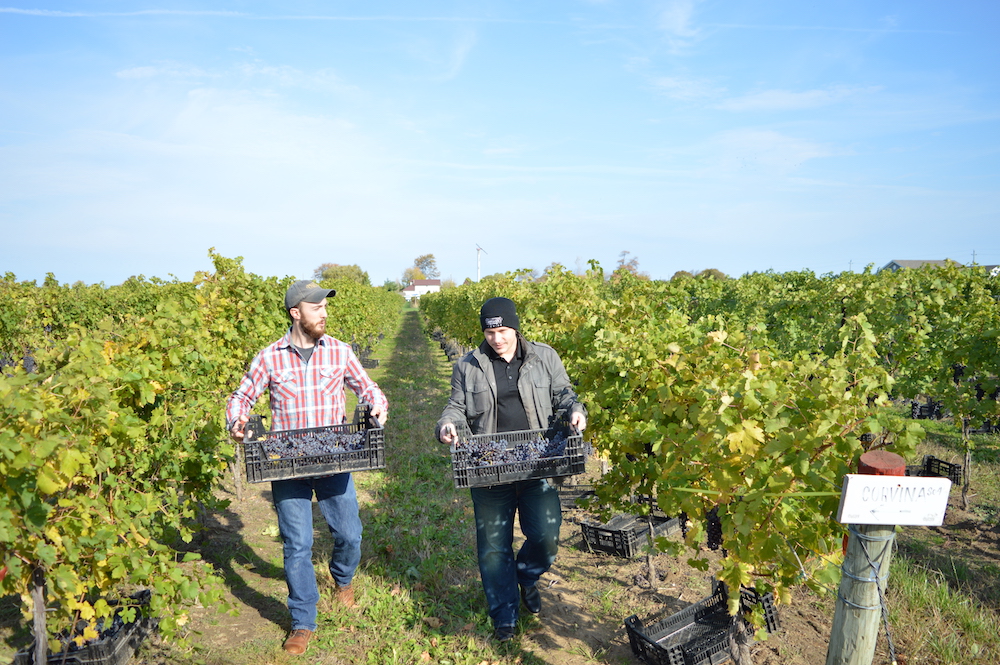
In depth data for the 2020 crop is not available from the GGO until March 2021, but based upon the last 5-year average, the Bordeaux varietals in Ontario represent 75% of the vinifera reds, averaging 12,440 tonnes per year (2015-2019, 5-year average) and the Burgundy varieties represent 25% at 4,220 tones per year. VQA wines produced follow a similar ranking.
The leading production (5-year average) of red Vinifera in Ontario is:
• Cab Franc: 5,220 tonnes
• Merlot: 4,140 tonnes
• Cab Sauv: 3,080 tonnes
• Pinot Noir: 2,540 tonnes
• Gamay: 1,680 tonnes
The leading production (5 year average) of white Vinifera in Ontario is:
• Chardonnay: 9,040 tonnes
• Riesling: 9,020 tonnes
• Pinot Gris: 2,900 tonnes
• Sauv Blanc: 2,320 tonnes
Total Hybrids represent 36% of grape production in Ontario and are used mostly in blending. They are more winter hardy and are some of the few grapes that survive in outlying areas.
The Ontario crop in the last 5 years has ranged from a low in 2018 of 63.8 tonnes per year to a high of 87.6 tonnes in 2017. The 5-year average is 74.6 tonnes.
Determining crop size
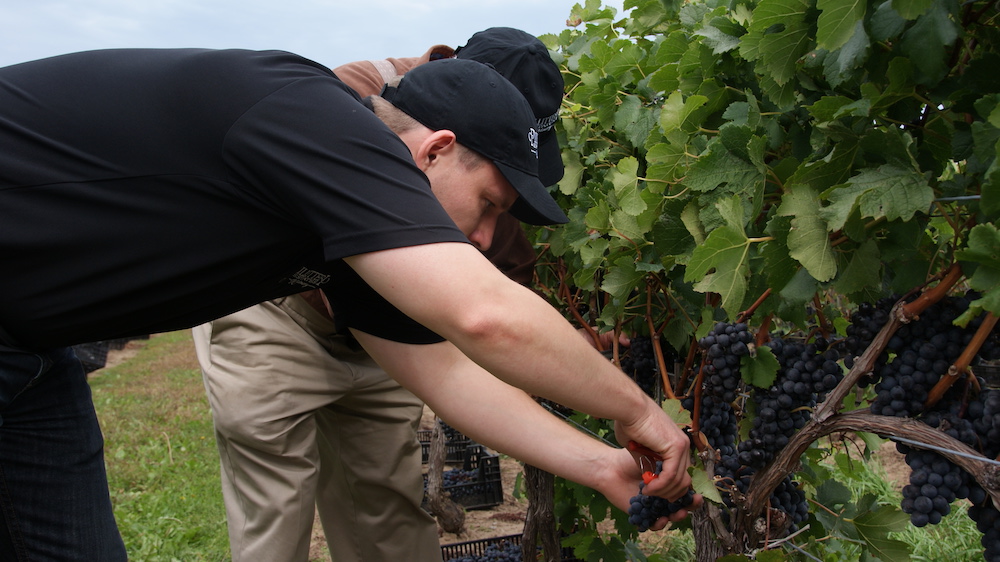
Two key aspects determine the total crop, bud survival and the amount of rainfall. A third factor, which rarely changes (in an average bud survival year) is what tonnage of fruit per acre each grower leaves on their vines.
If cold winter damage occurs early, growers can leave more fruit buds per vine. If cold winter damage occurs after pruning or there is a poor bud set in June they may thin less fruit off. Almost every year growers reduce the crop to attempt to produce a consistent crop or their average crop for their farm.
Not all growers leave the same tonnages per acre on their vines but most growers leave the same number of fruit buds or bunches per vine every year on their own vines.
High rainfall at the right time of year can add 10-15% to that average. Growers can crop with greater berry size or a shortage of rain can reduce that crop by 10-15%. Fruit bud survival over the winter was above 80%, which is excellent. Anything above 70% usually results in a near full crop. Grape vine removal vs plantings in the last 5 years is somewhat constant plus or minus 5% (estimated).
Weather in 2020
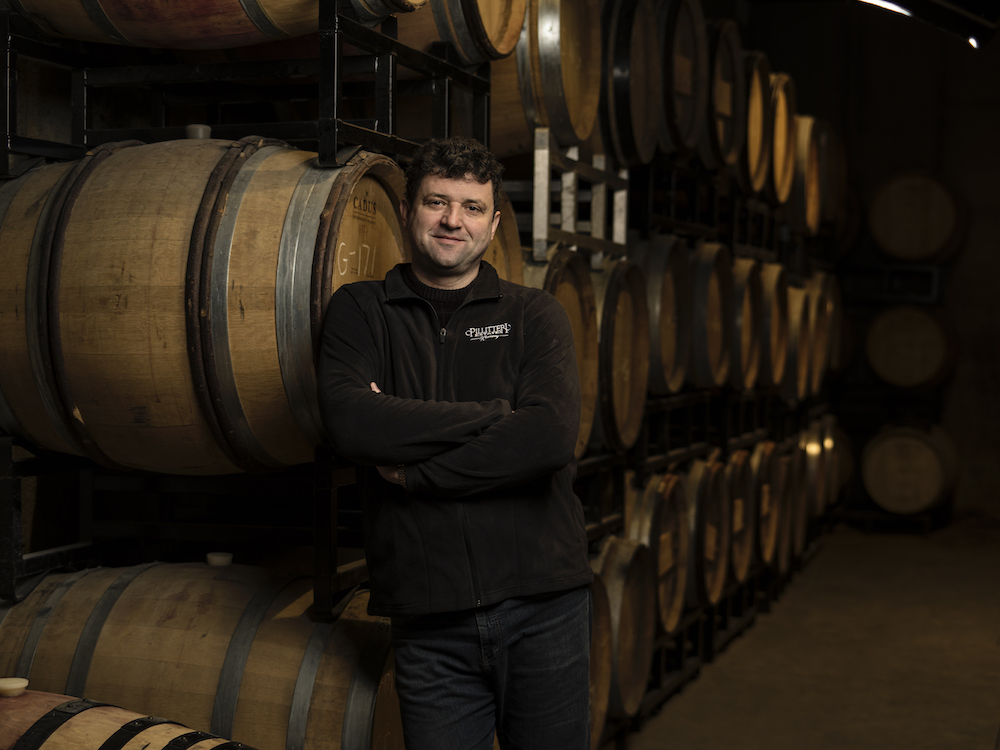
Looking back to the 2018 and 2019 years, there was good moisture reserve in the soil for the start of the 2020 crop. But very dry weather in the spring of 2020 dissipated those reserves quickly, having possibly an impact upon fruit set. Many growers reported little need for fruit thinning in 2020 other than secondaries. It was unusual to have a high fruit bud survival and a lower fruit set.
Mature vines without irrigation on loamy soil on deep rootstock clones like 3309 did fairly well as the vines sent their feeder roots down deep early in the season in search of moisture and accessed long forgotten nutrients deep in the soil. Other vines without irrigation, young vines with shallow roots, shallow rootstock clones like Riperia or 101-14 and those vines on heavier soils suffered significantly and you could see the stress in berry size and reduced canopy. Some had pea-sized grapes at maturity that is a result of grape vines in stress.
The reduced canopy resulted in a lower leaf to fruit ratio resulting in less carbohydrates and sugars for the vine and fruit. Irrigation is a fantastic tool in reducing drought damage that reduces crop volumes/quality but irrigation does not fully replace Mother Nature’s rainfall.
2020 was definitely an El Nino year with a mild winter in January to March, no extremes in cold and it was a warmer and dryer summer, fall and early winter.
Early to mid May is when GDD (Growing Degree Days above 10 C) start to build and vines grow. May had average temperatures but from then until June to the second week of November temperatures were above normal by 2-4 C every day and night by over 5+ C. Although the season did not start any sooner than normal GDD accumulated every day to become one of the highest GDD on record.
The fruit
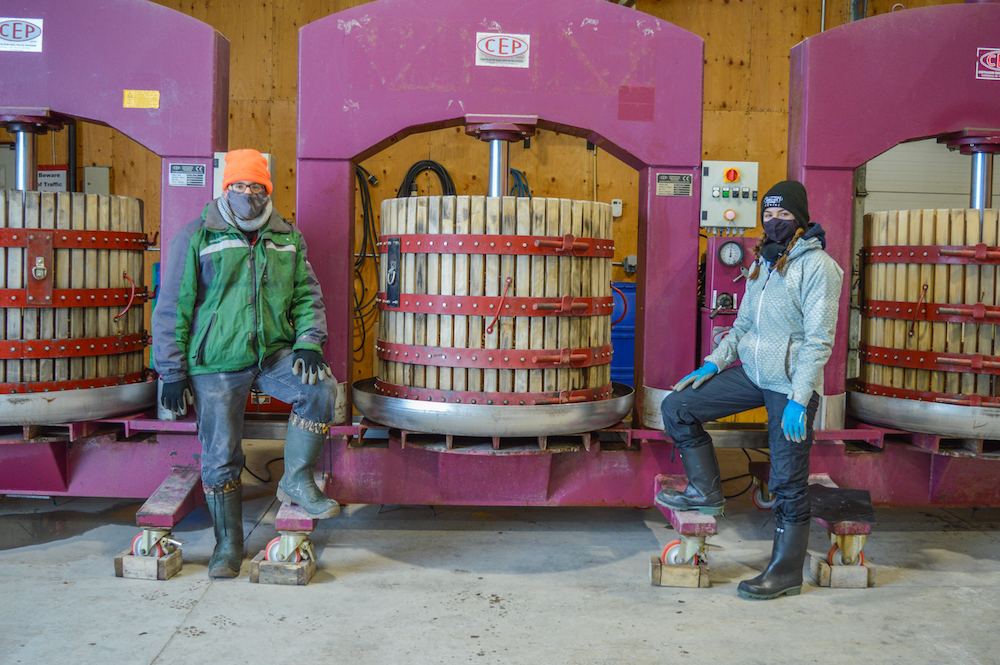
Although Ontario is considered a cool climate wine region, a vintage like 2020 was one of the many years that changes that whole perspective. It is well known we have variable vintages as much from season to season as region to region. Without a doubt, 2020 was a Bordeaux vintage everywhere in Ontario and the Bordeaux varieties that are 3/4 of the red wine grapes in Ontario preformed incredibly.
This vintage, all grape varieties produced high calibre fruit with low disease pressure. Berry size was smaller than average, producing a higher skin to juice ratios with more colour, tannin and character. This year it was common in nearly every vineyard to have the highest Brix ever recorded with slightly lower weights.
Winemakers were very excited with what many would call the best vintage since 2010 or 1998. Winemakers determine when grapes are ripe for harvest when the acid drops, the PH rises, Brix rise and seeds turn brown. Adverse weather is also a factor that can advance or delay harvest. Production capacities/schedules at larger wineries can also dictate picking grapes earlier or later than desired.
The 2020 warmer and dryer than normal fall saw lower acids and a higher PH, and rapidly skyrocketing Brix to levels unheard of before. It was almost as if vineyards were producing appassimento grapes in the vineyard. The average between our 5 Merlot blocks was 24.8 Brix with one field at 25.9 Brix. The skins on red vinifera in 2020 yielded very dark colours, Merlot proved to be one the greatest examples. What was most noticeable in 2020 than in other years was that a rapid climb in Brix due to ripe fruit desiccating resulting also in weight being reduced. All that dry warm weather from spring, summer and fall had accelerated desiccation.
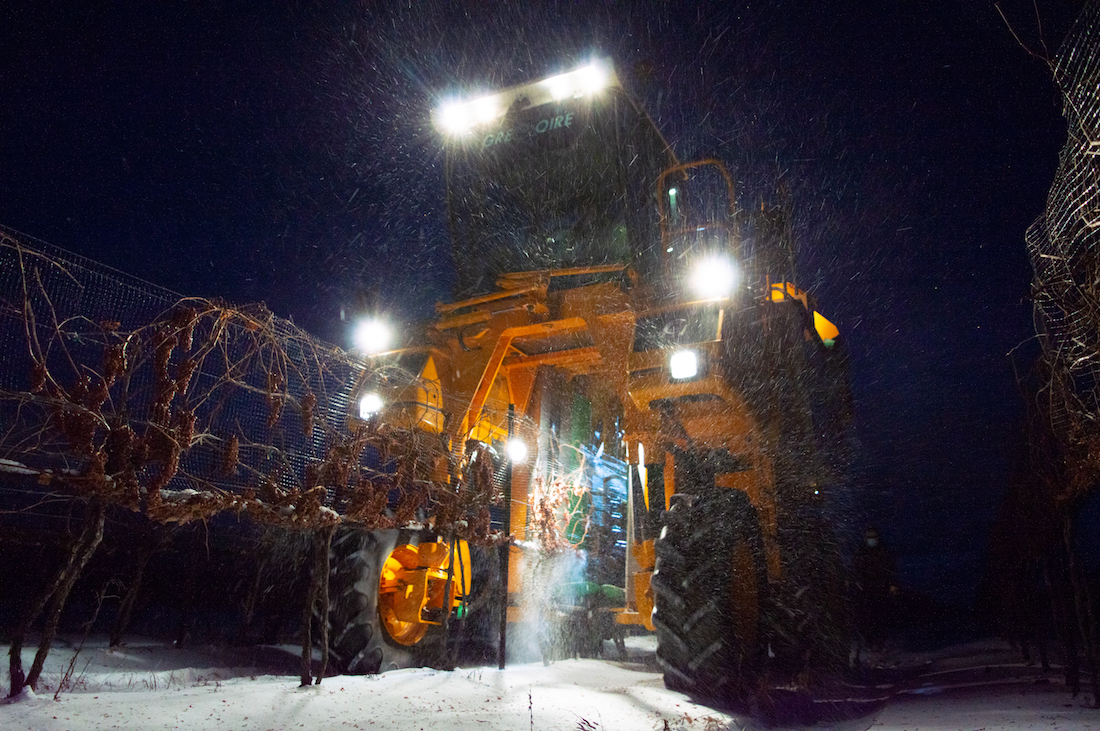
Other years, most vegetative growth dramatically slows at the end of August but can partially continue in a wet fall producing some herbaceous vegetative flavours. In 2020, it was almost impossible to find herbaceous or vegetative flavour in fruit. Varieties like Riesling had to be harvested earlier than expected so as not to loose acidity or allow Brix to become to high.
The xylem and the phloem of the plant impact the production of the fruit. The xylem is the main pipeline that delivers water and minerals mostly to and partially from the berry. There is hydrostatic pressure in the xylem that puts more water into berries if there are large water volumes in soils. If there is sufficient water in the ground then the vine develops larger fruit up until verasion, in the case of 2020 there was less water therefore smaller berry size. The phloem imports water and sugar into the berry in only one direction.
After veraison the xylem ends most of its transference to the berry. The phloem ends most of its transference to the berry at around 22-23 Brix. From this point onward if there is warm dry weather like there was in 2020 the berry begins to desiccate quickly due to plant respiration in warm weather. If it was cool and wet then desiccation would be minimal.
Few appassimento wines in 2020 needed to be made by rack drying because there would not be a large difference between regular harvest and rack dried fruit. When Mother Nature wants to do all the work for you, you let her, as she will do it better. Our latest maturing varieties like Corvina, Rondinella and Molinara were still rack dried.
Vinifera white wine varieties are thin skinned and often tight bunched and very susceptible to rot in what is often wet weather weeks before harvest. The dry warm weather of 2020 enabled whites to be picked earlier than average and cleaner (free from botrytis) than average. Expect some very clean, full fruit forward white wines from 2020. Rot in all varieties was near none existent.
2020 El Nino year and icewine
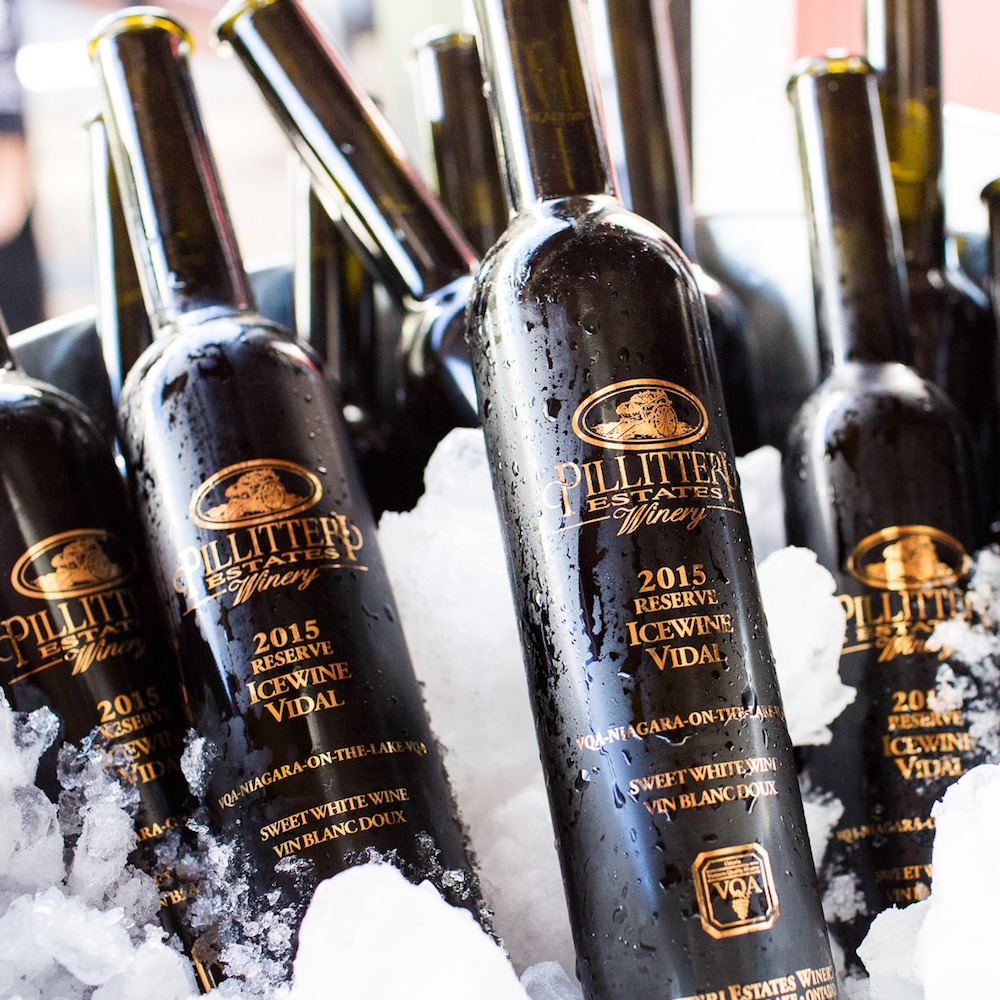
Icewine in an El Nino year like 2020 can be difficult. Warm fall weather ripens fruit earlier. Very ripe fruit does not hang long or well because of skin breakdown and dehydration, especially when it was warm like most of December and January was this winter. Dehydration/desiccation occurs more rapidly in a warm winter with ripe fruit. An ideal year for icewine with vinifera thin-skinned varieties is a cool, shorter GDD year and lower brix on the fruit. Growers like to leave slightly heavier volumes per acre of fruit so that it is less ripe thus not reaching 22 Brix and drying up while the leaves are still green. The incredible thing about icewine is that cold weather is what makes the fruit turn brown that gives icewine most of its flavours. Rule of thumb is that if you harvest icewine grapes with green berries instead of brown you won’t get good icewine flavours. That’s why it looks good to be the first to pick in the season but is not good for quality.
The loss of agri-tourism
in 2020 and likely 2021

The main market for icewine is front door, international agri-tourism sales, duty free and export. Typically growers leave up to 5,000 tonnes of mostly Vidal fruit for icewine. International agri-tourism is a significant majority of icewine sales and it evaporated in 2020 and is projected not to exist in 2021.
This year the marketplace drove the volume of icewine from 5,000 tonnes down to 1,000 tonnes, a 15% crop. Wineries just left less grapes for icewine from the 2020 crop due to market conditions and partially because the risk was much greater with El Nino.
The warm El Nino weather that carried all the way through January resulted in a later harvest of the icewine grapes than normal. Bird damage and dehydration of even the hardy Vidal grapes will likely result in less than 10% of a normal crop rather than 15% of a normal crop. Close to 1,000,000 litres of icewine is produced each year. The 2020 vintage of icewine will be rare in that it is likely to be less than 100,000 litres.
Pillitteri Estates Winery is the world’s largest Estate Producer of icewine. It is a family run business of three generations and 10 full-time family members. Pillitteri Estates Winery is one of the largest exporters of icewine in the world. Our winery typically produces about 25-30% of Ontario’s crop. The 2020 icewine harvest was mostly completed in a few nights just before the last weekend of January. I have harvested icewine grapes for over 30 years. Charlie and myself with my father-in-law Gary’s supervision picked the winery’s first icewine grapes in the night on our knees in 1988. I am so glad today we use heated cabs in machine harvesters.


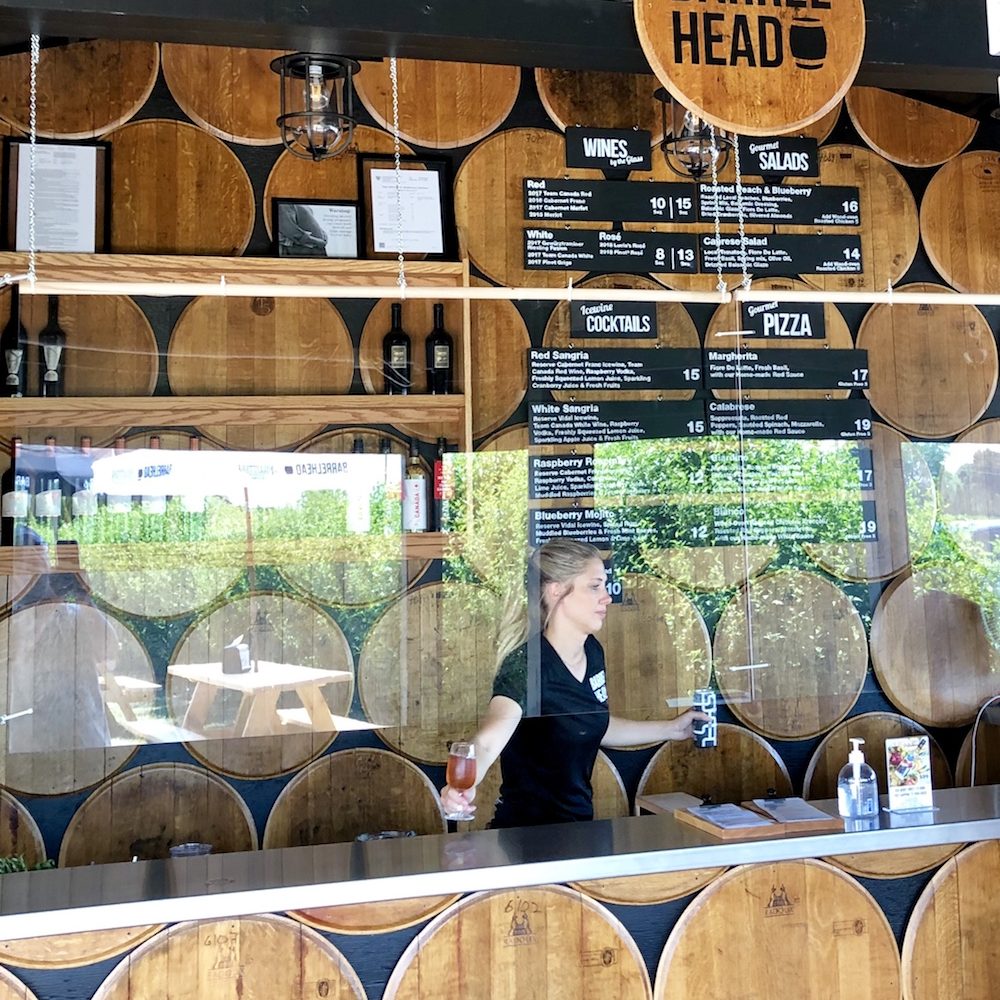



Comment here